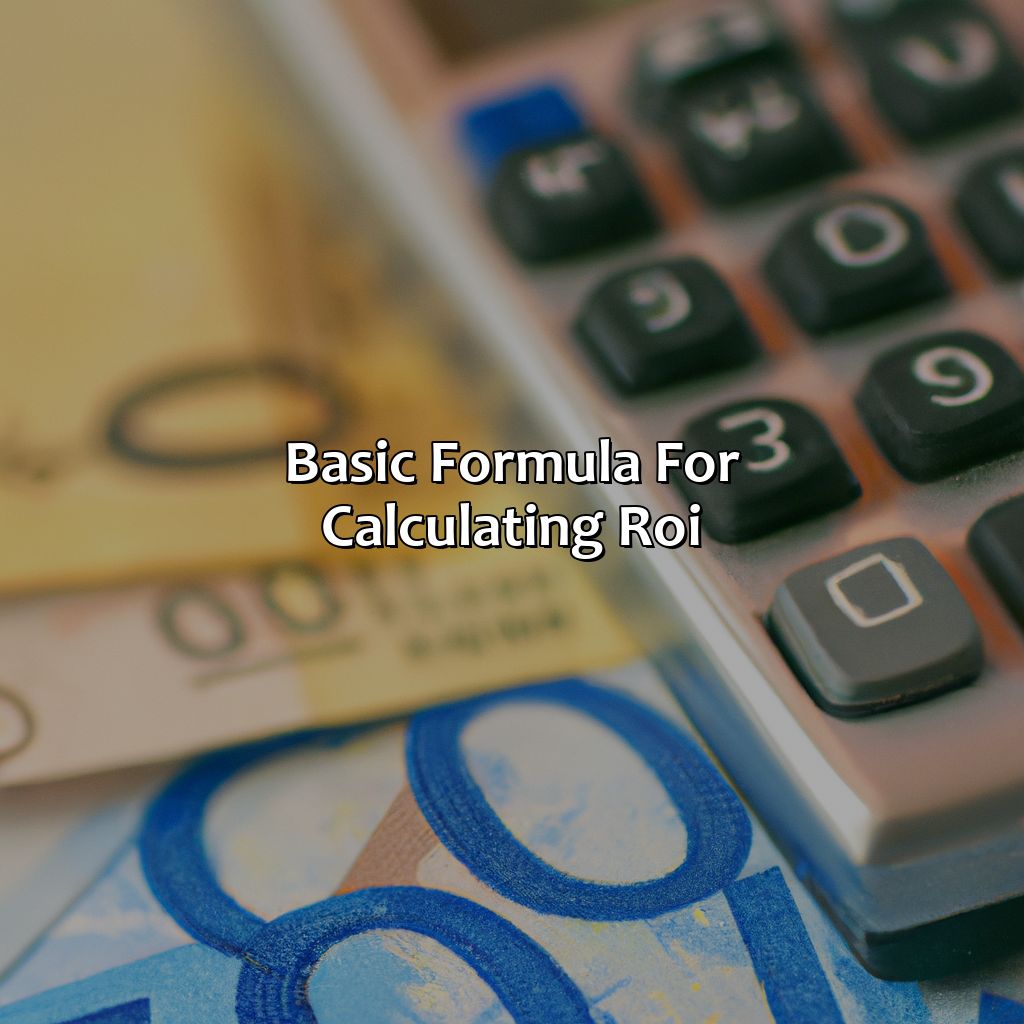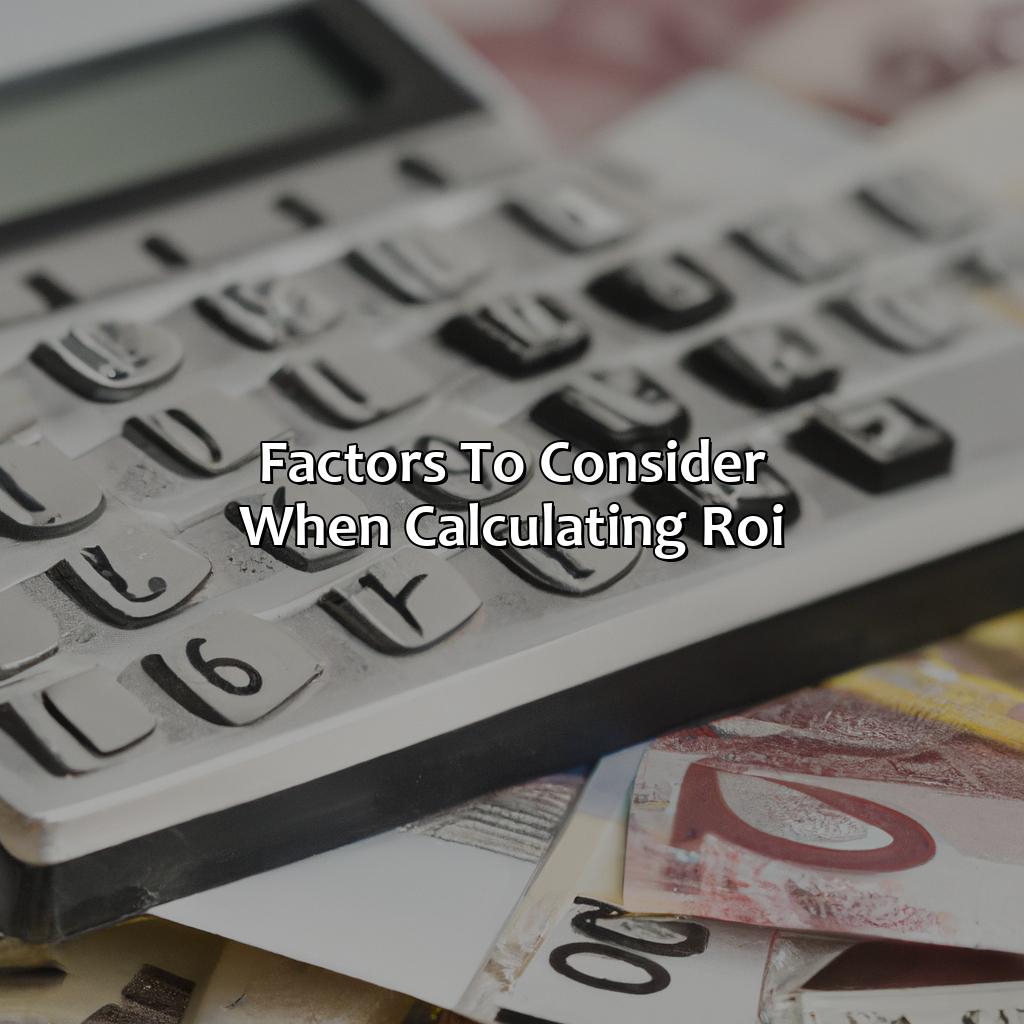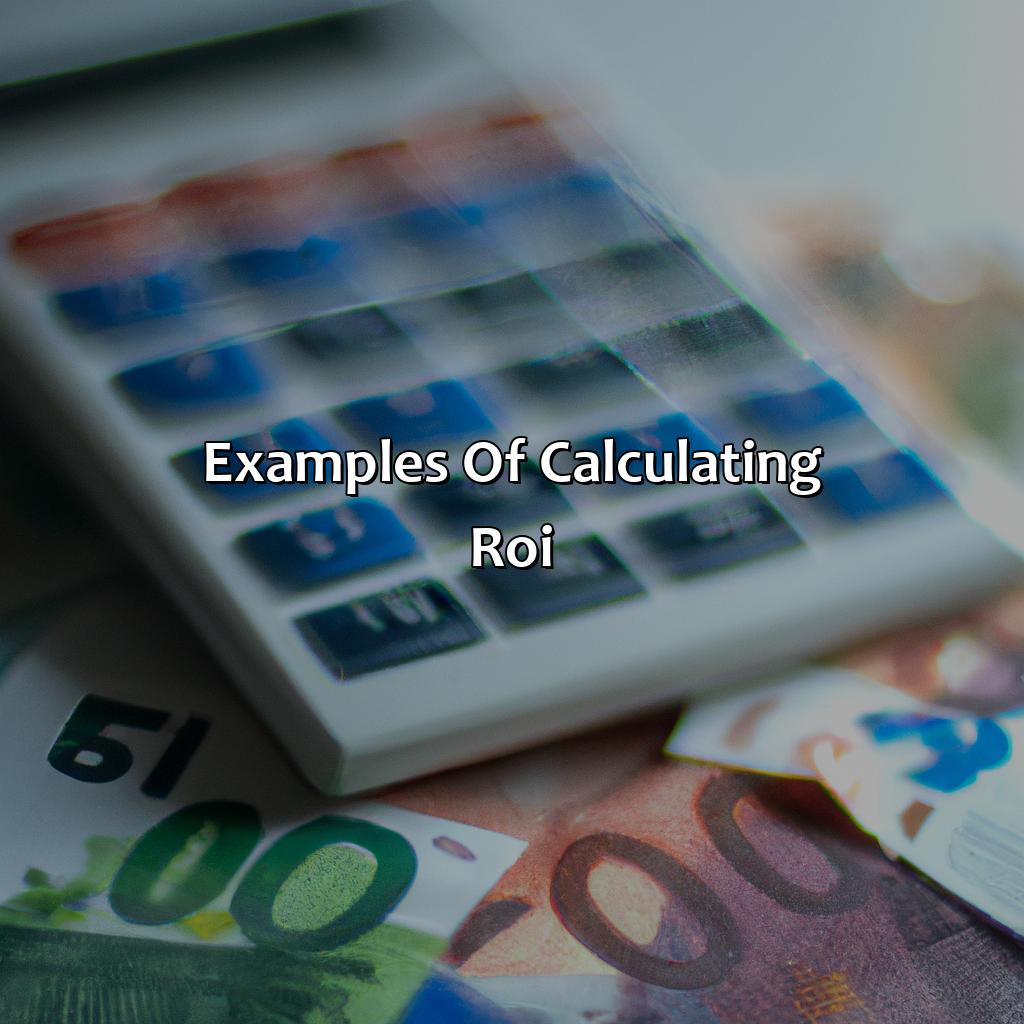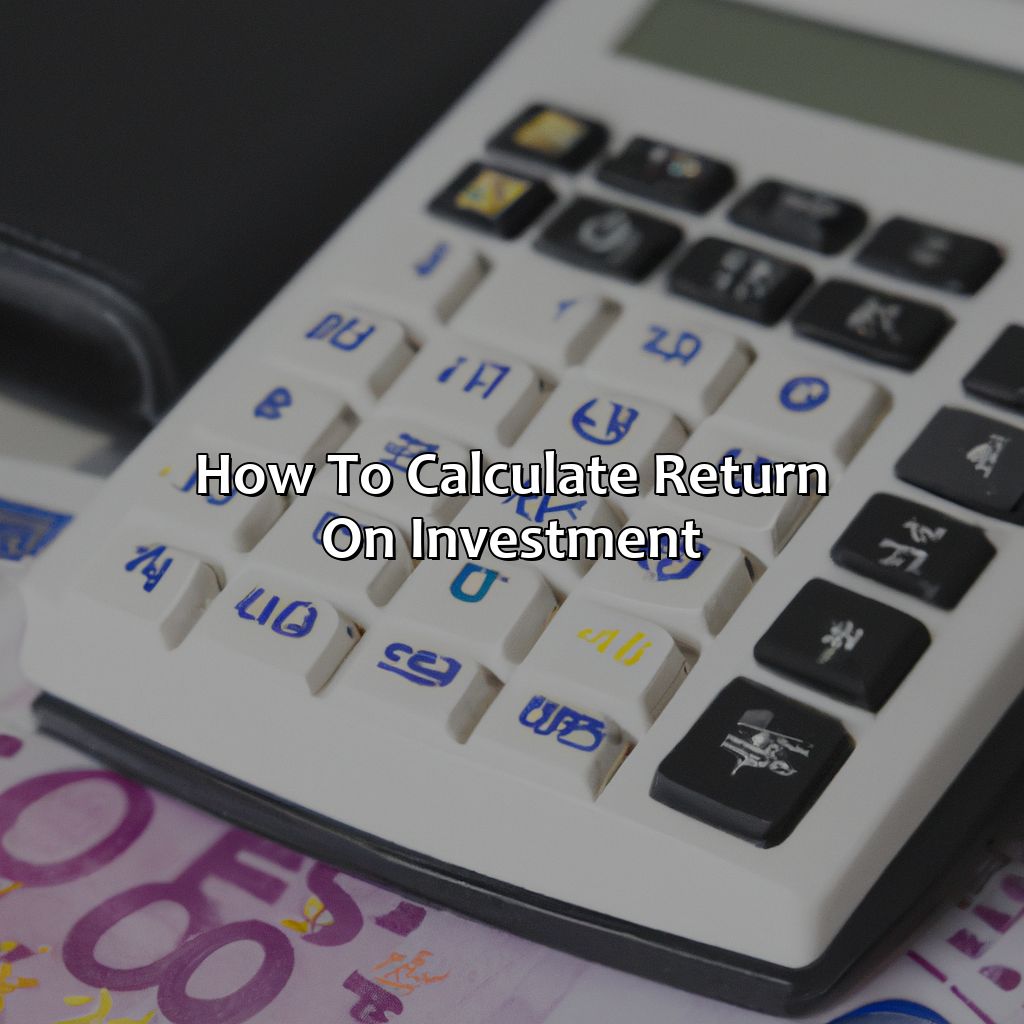How To Calculate Return On Investment?
Key Takeaway:
- It is important to calculate return on investment to make informed decisions about where to allocate resources and to determine the effectiveness of investments.
- Calculating ROI involves using a basic formula that takes into account the investment cost, revenue generated, time period, and other expenses.
- Factors to consider when calculating ROI include the potential risks and uncertainties associated with the investment, as well as the potential for future growth and profitability.
Investing in any venture is no small decision. You want to ensure you understand the potential returns and any risks associated with the investment. This article will help you understand the basics of calculating return on investment so you can make informed decisions.
Importance of calculating return on investment
Calculating return on investment is crucial for anyone who wants to make informed business decisions. It helps quantify the profitability of an investment and assess whether it’s worthwhile. By analyzing ROI, one can decide whether to keep or change course. This is especially important for businesses that want to maximize profits and plan for long-term success.
When calculating ROI, one accounts for all costs and gains related to an investment, which makes it an all-encompassing metric for profitability.
ROI ensures that a business operates efficiently and effectively, offering a clear way to measure profits. It helps investors and stakeholders to understand the performance of a business. It plays a significant role in decision-making at all levels within a company or organization. ROI can point out inefficient investments and suggests where to put more resources to increase profits. It also helps justify any spending because the ROI will show a clear link between investment and returns.
One unique consideration is that ROI does not account for the time value of money (TVM), which can impact the actual profitability of an investment. Understanding how to calculate ROI, while considering TVM, is key to accurately analyzing the profitability of an investment.
According to Forbes, “40% of businesses fail due to a lack of market need or over-investment” which makes a clear understanding of ROI a priority for businesses to succeed.

Image credits: retiregenz.com by James Woodhock
Basic formula for calculating ROI
Calculating ROI is an essential aspect of measuring the profitability of investments. The basic formula involves subtracting the initial investment cost from the final revenue and then dividing it by the initial investment cost. This yields a percentage that represents the ROI.
To calculate ROI, consider all the costs and the resulting returns, including any gains or losses. The formula can be applied to all types of investments, including stocks, real estate, and business ventures. It helps investors determine whether a particular investment is worth pursuing or not.
Unique details to consider while calculating ROI include incorporating the time value of money, which considers the fluctuation of inflation rates and the passage of time. Additionally, it is essential to be consistent with the units of measurement. For instance, if the investment returns and costs are measured in different currencies, the results may not be accurate.
To improve ROI, investors can consider diversifying their portfolio by investing in different stocks, assets, or sectors. Another suggestion is to adopt a long-term investment approach, which minimizes risks and increases the likelihood of significant returns.

Image credits: retiregenz.com by Joel Arnold
Factors to consider when calculating ROI
When calculating ROI, various aspects need to be taken into consideration.
Four factors to consider when calculating ROI are:
- Initial Investment, which refers to the amount spent on acquiring the asset.
- Revenue Generated, which is the benefit gained from the asset over a particular period.
- Timeframe, which is the period over which the ROI is calculated.
- Costs, which include all subsequent expenses related to the asset.
Alongside the above factors, it’s crucial to recognize the significance of the ROI calculation in evaluating the profitability of investments. Regardless of the investment type, whether it’s stocks, real estate, or business ventures, calculating ROI enables an effective assessment of the returns.
Don’t let the fear of missing out stop you from calculating your investment’s ROI. Effective ROI calculation empowers you to make informed decisions, maximize returns, and identify any inefficiencies in your investment. Start calculating ROI now!

Image credits: retiregenz.com by Harry Arnold
Examples of calculating ROI
ROI Calculation Examples:
To better understand how to calculate Return on Investment (ROI), we present some real-life examples of ROI calculations.
| Project | Investment | Gain | ROI |
| Marketing Campaign | $10,000 | $15,000 | 50% |
| Business Expansion | $100,000 | $150,000 | 50% |
| Product Development | $50,000 | $75,000 | 50% |
These examples show how ROI is calculated by dividing the gain of an investment by the cost of the investment and multiplying the result by 100%.
In addition to these examples, it is important to note that ROI can be calculated for any type of investment, including intangible assets such as human resources and employee training. By tracking ROI for different investments, businesses can make informed decisions about where to allocate their resources.
One real-life example of the importance of ROI is a company that invested heavily in a new product line without properly calculating the potential ROI. Despite initial success, the company eventually found that the product line was not generating enough profits to justify the investment, leading to financial difficulties.

Image credits: retiregenz.com by Yuval Duncun
Some Facts About How To Calculate Return On Investment:
- ✅ Return on Investment (ROI) is calculated by subtracting the initial investment from the final investment and dividing the result by the initial investment, expressed as a percentage. (Source: The Balance)
- ✅ ROI is a metric used to measure the profitability of an investment. (Source: Investopedia)
- ✅ ROI can be used to compare the performance of different investments. (Source: The Motley Fool)
- ✅ ROI can be calculated for a specific time period or over the entire lifetime of an investment. (Source: Entrepreneur)
- ✅ There are various factors that impact the ROI calculation such as taxes, fees, and inflation. (Source: Forbes)
FAQs about How To Calculate Return On Investment?
How to calculate return on investment?
Return on investment (ROI) is a crucial metric for determining the success of an investment. The formula for calculating ROI is:
ROI = (Gain from investment – Cost of investment) / Cost of investment
Below are some frequently asked questions and answers on the topic of calculating ROI.
What is included in the “Gain from Investment”?
The gain from investment includes any proceeds that result from the investment. This could be in the form of capital gains, dividends, or interest payments. When calculating the ROI, these gains should be added together to get the total gain from investment.
What is included in the “Cost of Investment”?
The cost of investment includes any expenses that were incurred when making the investment. This could range from transaction fees and brokerage charges to the purchase price of the asset. When calculating the ROI, these costs should be added together to get the total cost of investment.
What if I only have a partial gain or loss from my investment?
If you only have a partial gain or loss from your investment, you can still calculate the ROI using the same formula. Just make sure to include the partial gain or loss in the Gain from investment section of the formula.
Can ROI be negative?
Yes, ROI can be negative. A negative ROI means that the investment lost money. This could happen if the cost of investment exceeded the gain from investment.
What is a good ROI for an investment?
A “good” ROI varies depending on the context of the investment. In general, a positive ROI is considered good, but the specific threshold for what is considered a “good” ROI will depend on factors such as the type of investment, the industry, and the investor’s goals and expectations.
How can I use ROI to make decisions about future investments?
ROI can be used as a tool to help make decisions about future investments. By comparing the ROI of different investment opportunities, investors can evaluate which opportunity is likely to provide the greatest return. However, it is important to remember that ROI is just one factor to consider when making investment decisions.


